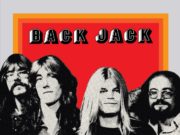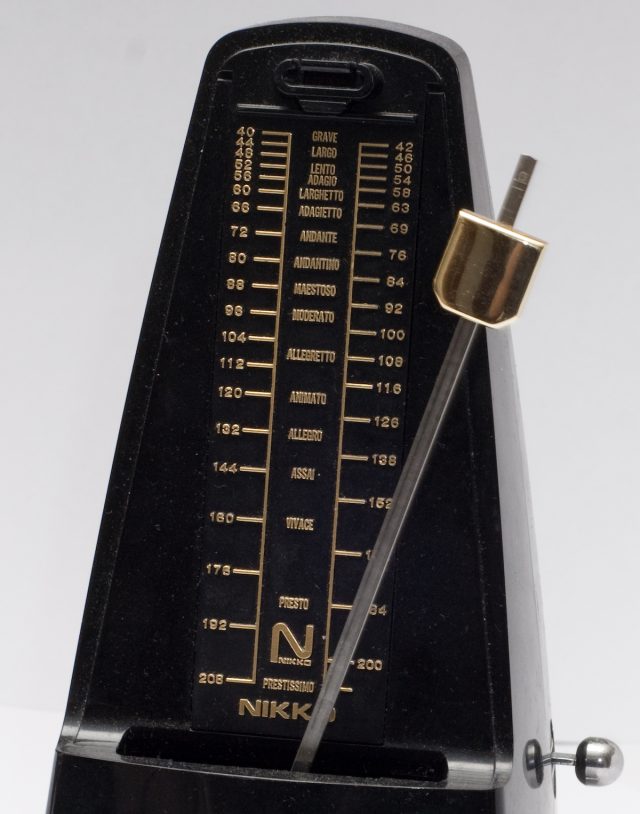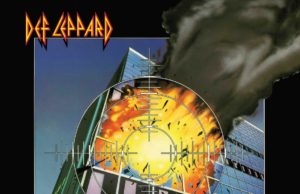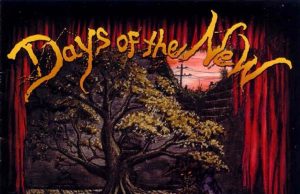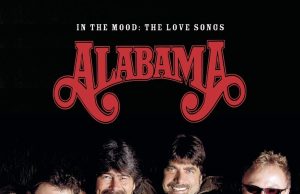 I have always been the guy in the band who had no idea what the “theory nerds” were talking about. Well, OK — I know they’re not nerds, but it makes me feel better about myself not knowing how to read music and understanding little more than what a fifth is and who deserves fudge. That which I do understand, I’ve picked up through osmosis and context over the years. This includes time signatures. A handy thing considering I’m often a drummer.
I have always been the guy in the band who had no idea what the “theory nerds” were talking about. Well, OK — I know they’re not nerds, but it makes me feel better about myself not knowing how to read music and understanding little more than what a fifth is and who deserves fudge. That which I do understand, I’ve picked up through osmosis and context over the years. This includes time signatures. A handy thing considering I’m often a drummer.
Here’s what I know about time signatures, aka those two numbers at the start of a measure of music which look like a fraction, without a line separating the numerator and the denominator. These numbers tell you the song’s rhythm, or “rhythmic structure.” The number on top tells you how many beats there are in the measure. The bottom number tells you the value or speed of those beats. So, a song in 4/4 time has four beats in the measure (the top number) and those notes are quarter notes (bottom number). This is the most common beat. It’s often called exactly that, or a straight beat. But, 3/4 time is also very common — think waltz.
Where things get interesting is when you get into what’s known as odd or irregular time, and mixed meter (songs with multiple time signatures). It doesn’t mean the songs are harder, necessarily — just different. Again, if 3/4 time is a waltz just think of 6/8 or 12/8 as a shuffle. I’ve played loads of these as a drummer in a bar cover band. Beyond those old chestnuts — and a ton of blues numbers — think: Everybody Wants To Rule The World by Tears For Fears, Bury A Friend by Billie Eilish and Misunderstanding by Genesis. While technically irregular, 5/4 is a Latin beat. The Mission: Impossible theme is in 5/4. Other common irregular signatures are 7/4 and 7/8.
I got on to this subject because I was reading about the Genesis song Turn It On Again. Sometimes time signatures can be deceptive. Not only did I think this 1979 hit was a straightforward rock song in 4/4 time, but so did one of its co-authors. Bass player/guitarist Mike Rutherford had the song’s main riff and keyboardist Tony Banks brought the chorus. Drummer Phil Collins sped it all up and is the one who first noticed the song’s odd time signature. Collins asked Rutherford if he knew the song was in 13, which shocked Rutherford. He thought it was 4/4.
It’s actually one of those mixed meter songs I mentioned earlier. The intro is 4/4 and 5/4 (or 9/4) while the verse/chorus alternates between 6/4 and 7/4 (to make 13). The bridge is the same as the intro. And here’s the fun part — the band loves watching audience members try to dance to it. Or, watching others try to play it. Such was the case when original lead vocalist Peter Gabriel returned for an early ’80s reunion and proclaimed he wanted to play drums on it. Gabriel can in fact play drums, but even he didn’t realize the song’s deceptive time signature until he was sat behind the kit.
So here’s what I’d like to do: Examine some other hit or well-known songs which would probably bite you in the ass if you tried to play them. They seem perfectly normal, because they’re familiar. But their time signature is anything but Wild Thing.
I already mentioned Mission: Impossible being 5/4 but here are three others you might find hard to dance to — also in 5/4 — Living In The Past by Jethro Tull, Closure by Taylor Swift and the instrumental opening and refrain of Cream’s White Room. My personal favourite 5/4 song is Take Five by The Dave Brubeck Quartet.
It’s not a dance song, but Mother by Pink Floyd just seems like a nice acoustic number about an overprotective mother. You might not have realized its in 5/8 and 9/8. River Man by Nick Drake is also 5/8.
You can totally dance to 6/4 — just try either version of Oh, Pretty Woman. The original by Roy Orbison is in the key of A, while the cover by Van Halen is in C# minor. Both start off in 6/4, then switch to 4/4 and back again. So do a ton of classic country, bluegrass and blues songs — they often add a couple of extra beats at the end of a verse. Electric Feel by MGMT is also in 6/4. There are others which are considerably more challenging 6/4 songs to dance to — Watcher Of The Skies by Genesis from 1972’s Foxtrot, Soundgarden’s Fell On Black Days, and Synchronicity I by The Police.
Stepping up to 7/4 we get a rather famous one, Money by Pink Floyd. The bass riff is so cool and catchy that you may not notice the time signature until you start playing, or soloing over it like sax player Dick Parry on the 1973 original from Dark Side Of The Moon. Guitarist David Gilmour had an easier go of it — the song switches to straight 4/4 for the guitar solo — a great song to listen to if you want to hear the effect a time signature can have.
Still with 7/4, most of All You Need Is Love by The Beatles is 7/4, apart from each verse has an 8/4 bit in it. Peter Gabriel‘s first post-Genesis single, Solsbury Hill, is in 7/4. The song 7/4 (Shoreline) by Broken Social Scene has the time signature right in the title. And then there’s the Soundgarden hit Spoonman, which is also in 7/4. The Seattle band has quite a few time signature exercise songs (and cool tunings).
Now the wackies.
Nine Inch Nails’ March Of The Pigs is in 7/8 (though after every three bars, it adds one measure of 4/4 to create a 29/8 time signature). Much of Led Zeppelin’s The Ocean also mixes 4/4 and 7/8, which is one of the first weird time signature songs I ever noticed by trying to drum along with it in the car. For the longest time I couldn’t even tap my foot to it. Jocko Homo by Devo is less surprising because it seems so weird. It’s mostly in 7/8 except for the call-and-answer bit at the end which is 4/4. Also unsurprising is Tom Sawyer by Rush, which is both 7/8 and 13/16.
Tattooed Love Boys from The Pretenders’ incredible debut album starts out in 15/8 — one bar of 7/8 and one bar of 4/4. Super tricky. I tried to play it but I couldn’t. You’re probably wondering about Kashmir by Led Zeppelin. It’s actually a polyrhythm — the music is 3/4, but the drums are in 4/4, until it goes nasty in the instrumental section after the first vocal, where there’s a measure of 9/8.
Radiohead have quite a slew of time signature gremlins in their catalog. The one most people would know best might be Everything In Its Right Place. It’s mostly in 10/4 — at least that’s one way to count it. More accurately it goes between 6/4, 4/4 and 5/4. It’s not for me, this one.
Points to OutKast for their hit Hey Ya, which is probably the biggest-selling song in 11/4 ever. If you actually want to play it, it may help you to count it as three measures of 4/8, one of 2/8, followed by two more of 4/8.
Blockhead by Devo toggles between 11/8 and 4/4. Starless by King Crimson is 13/4. Golden Brown by The Stranglers is 13/8. Rusty Cage by Soundgarden veers into 19/8 and Frank Zappa’s Keep It Greasy is 19/16 and 21/16. Part of Master Of Puppets by Metallica is 21/32. Pat Travers’ Heat In The Street is in 13/8, but deftly combines two different rhythmic feels — one section features three bars of 3/8 waltz time plus one bar of 4/8, while the next combines two bars of 4/8 time with one of 5/8. K.G.L.W. by King Gizzard and the Lizard Wizard, like many of their songs, is basically a math exercise. The song’s time signature progressively increases as it goes: 1/8, then 2/8, 3/8, 4/4, 5/4, 6/4, 7/4, 9/4, 11/4, 13/8, 15/8, 17/8, 19/8 and 21/8.
I’ll end with one of my favourite songs of all time: Happiness Is A Warm Gun by The Beatles. The song is actually snippets of several song ideas, all pieced together. There are measures of 3/8, 5/4, 9/8, 10/8 and 12/8, with a lot of the weirdness happening during the “Mother Superior jumped the gun” section. The chorus/vocal section starts in 4/4 and shifts to 6/4, even though Ringo stays in 4/4.
You don’t see many covers of that. People shouldn’t cover The Beatles anyway, but that’s another story.
Here’s your time signature playlist:
• • •
Area Resident is an Ottawa-based journalist, recording artist, music collector and re-seller. Hear (and buy) his music on Bandcamp, email him HERE, follow him on Instagram and check him out on Discogs.



